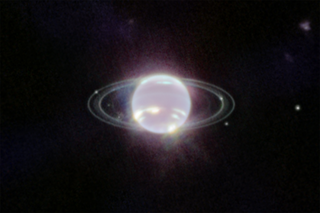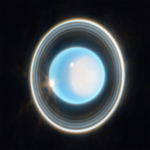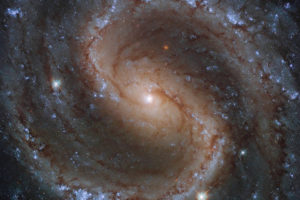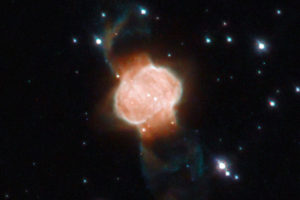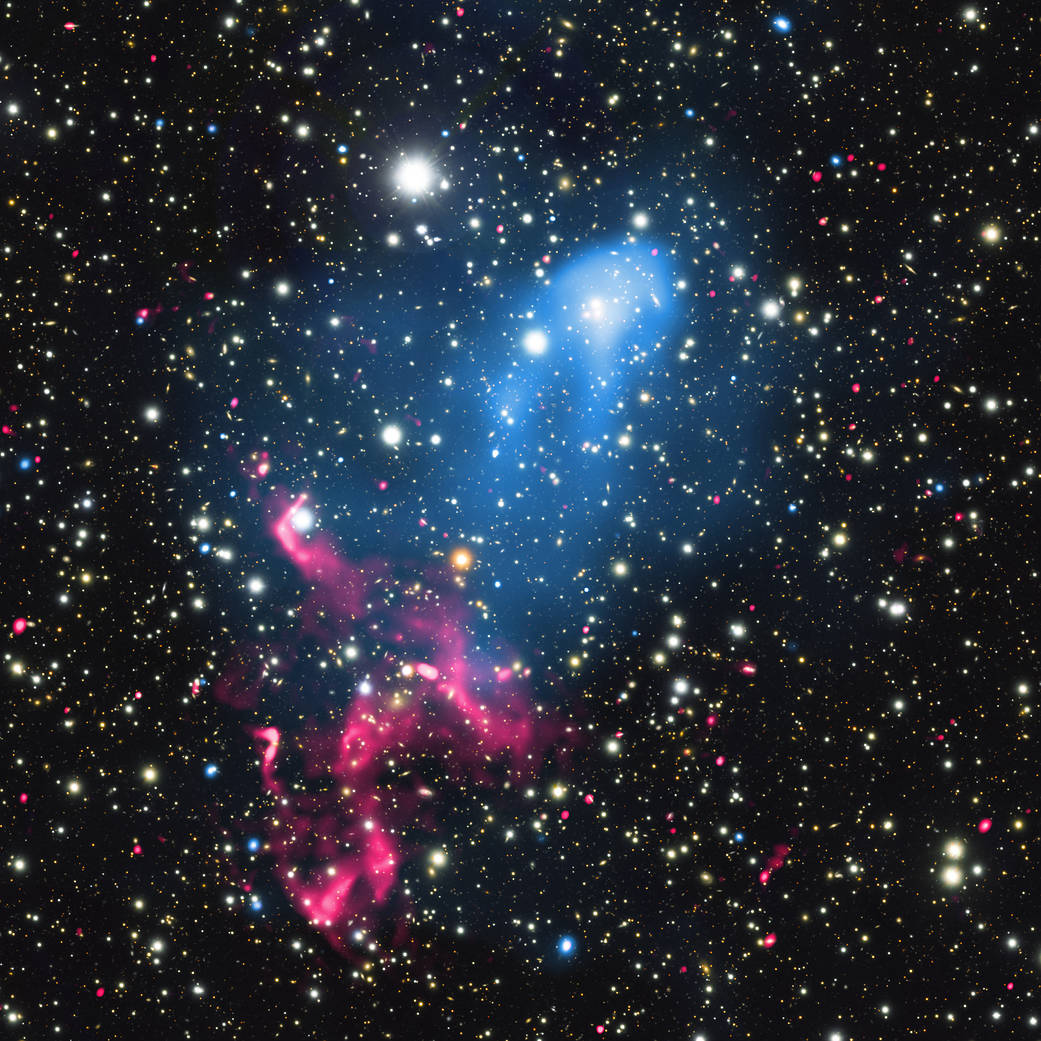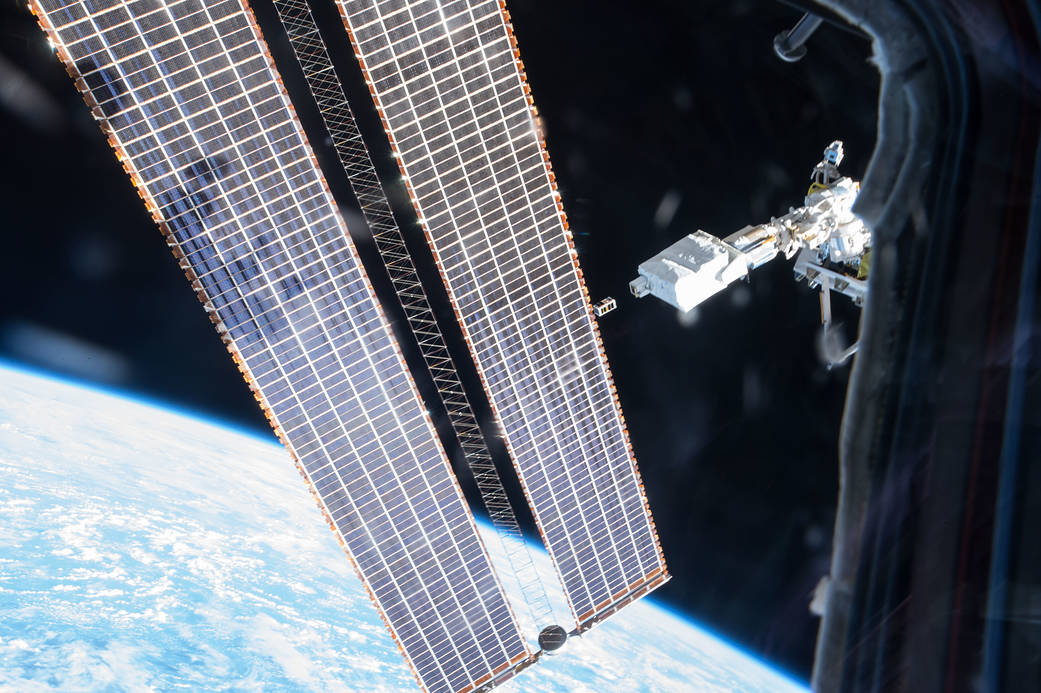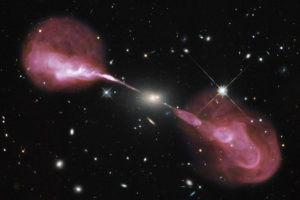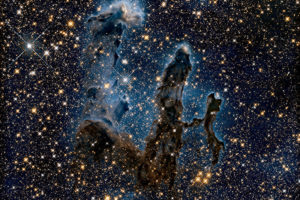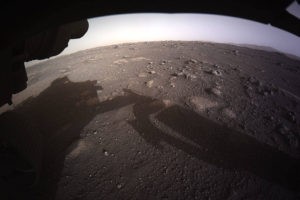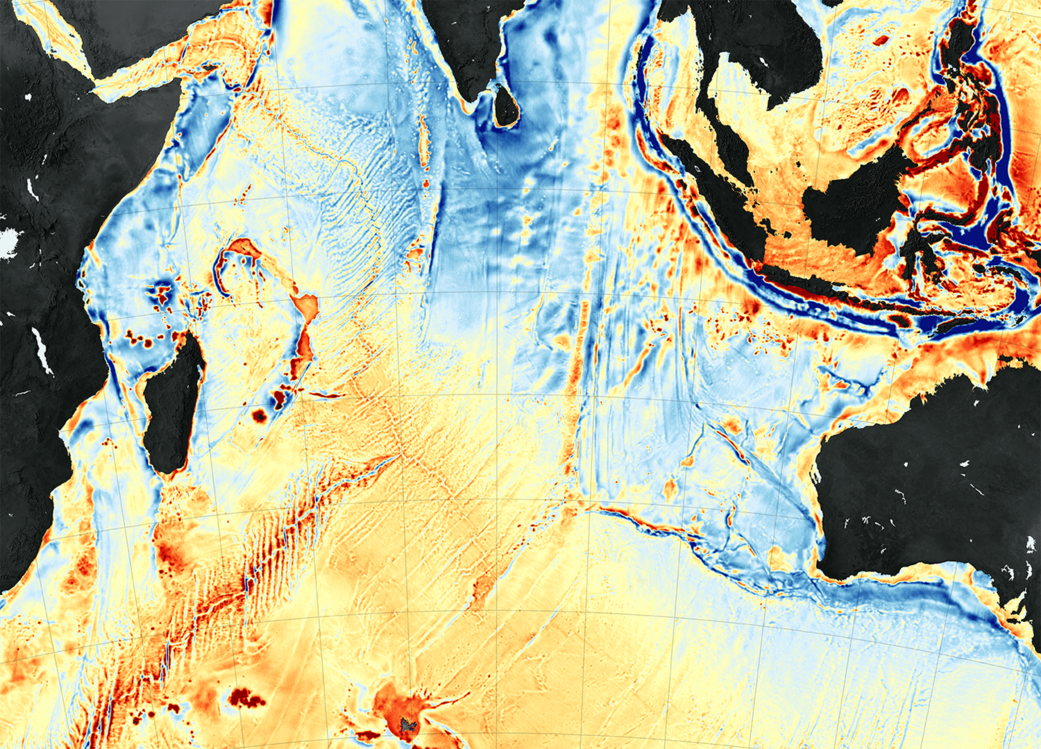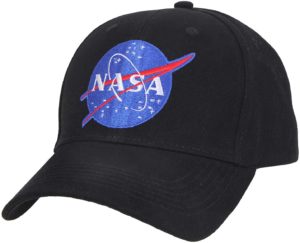Webb’s Near-Infrared Camera (NIRCam) images objects in the near-infrared range from 0.6 to 5 microns, so Neptune does not appear blue to Webb. In fact, the methane gas so strongly absorbs red and infrared light that the planet is quite dark at these near-infrared wavelengths, except where high-altitude clouds are present. Such methane-ice clouds are prominent as bright streaks and spots, which reflect sunlight before it is absorbed by methane gas.
Credits: NASA, ESA, CSA, STScI
ウェッブの近赤外線カメラ (NIRCam) は、0.6 ~ 5 ミクロンの近赤外線で画像化するため、海王星は青く見えません。 実際、メタンガスは赤色光と赤外光を強く吸収するため、高高度の雲が存在する場所を除いて、近赤外波長では非常に暗く見えるのです。 メタンガスに吸収される前に太陽光を反射するような地点では、メタン氷雲は明るい筋や斑点として目立つことになります。
2022.09.21に公開化されたジェームズ・ウェッブ宇宙望遠鏡で撮影した海王星の画像です。
こちらが初撮影のものでした。
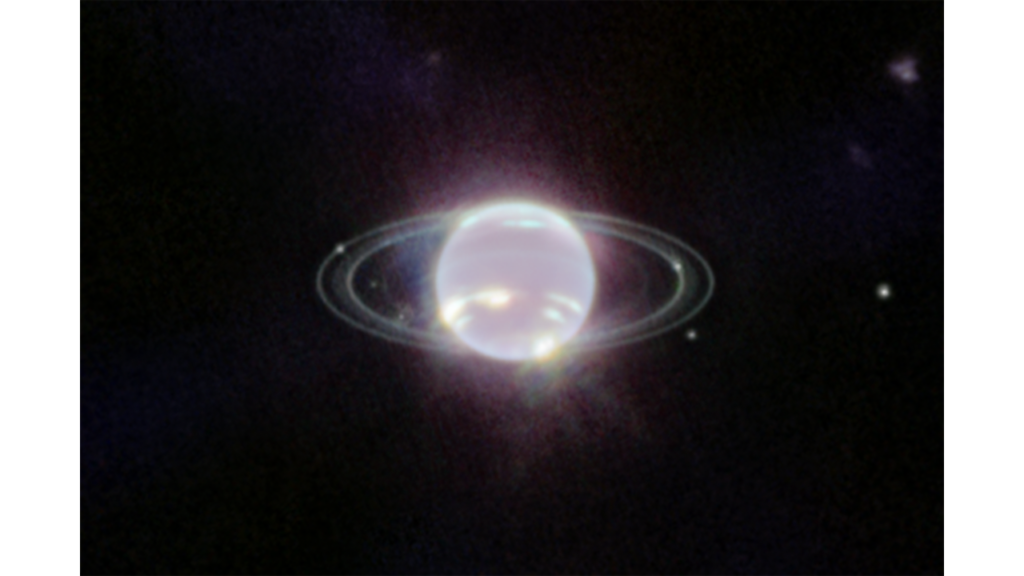
New Webb Image Captures Clearest View of Neptune’s Rings in Decades
New Webb Image Captures Clearest View of Neptune’s Rings in Decades | NASA
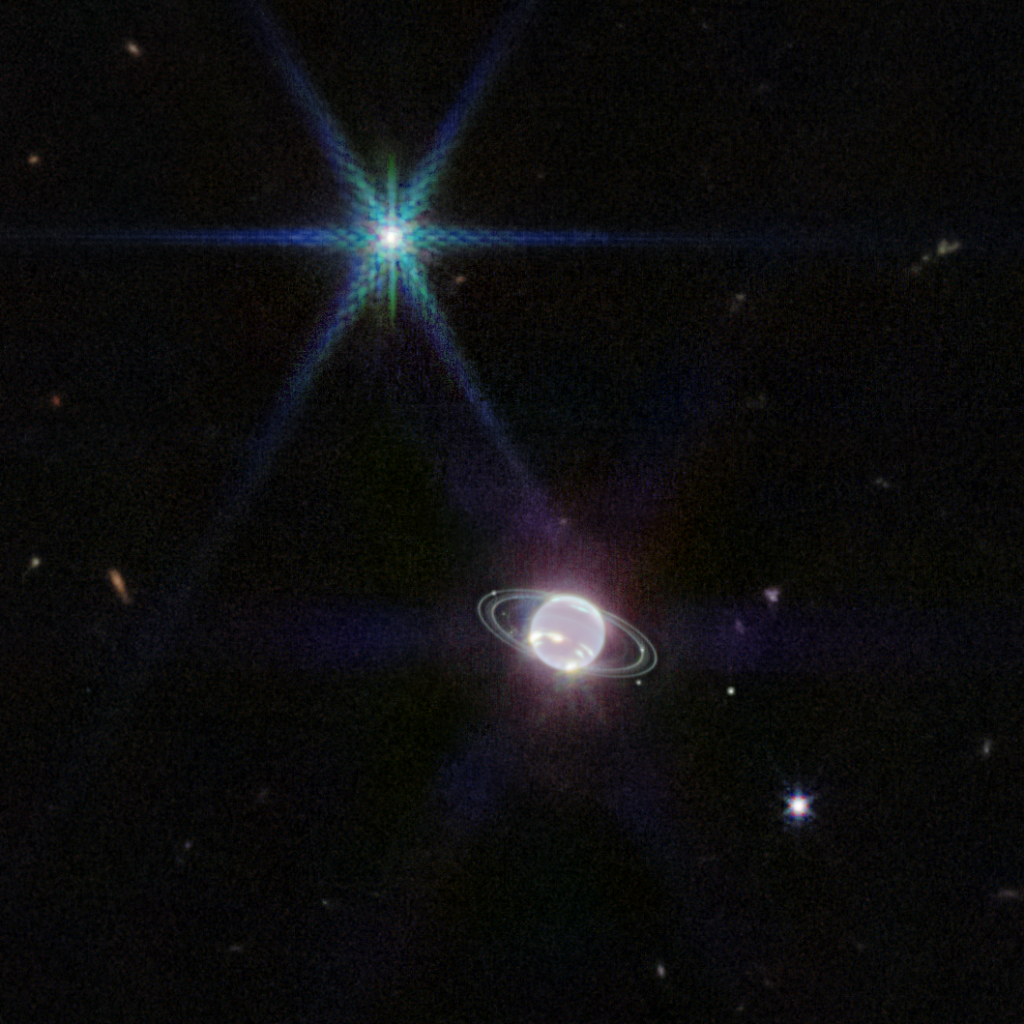
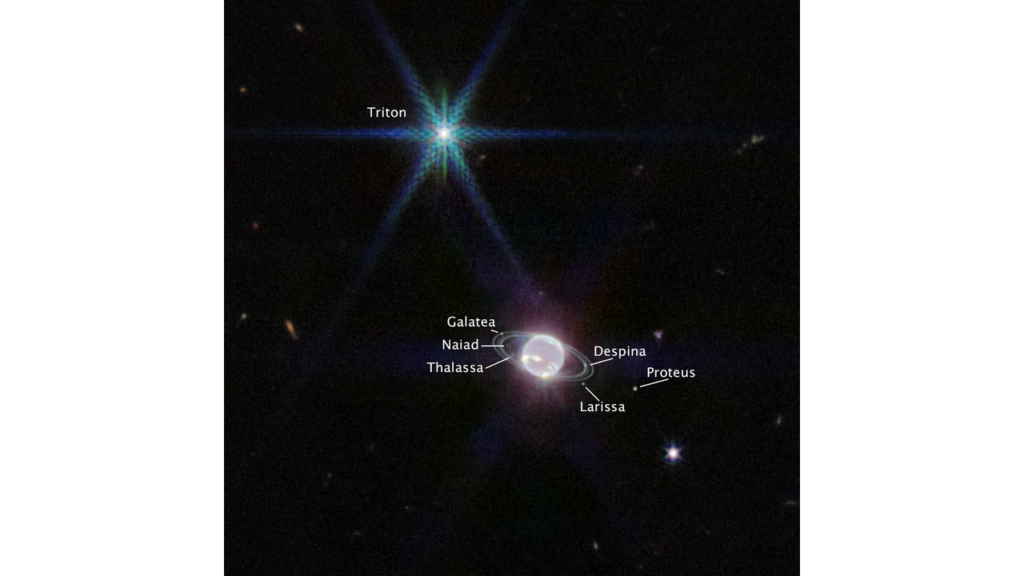
What do we see in Webb’s latest image of the ice giant Neptune? Webb captured seven of Neptune’s 14 known moons: Galatea, Naiad, Thalassa, Despina, Proteus, Larissa, and Triton. Neptune’s large and unusual moon, Triton, dominates this Webb portrait of Neptune as a very bright point of light sporting the signature diffraction spikes seen in many of Webb’s images.
Credits: NASA, ESA, CSA, STScI
氷の巨大惑星である海王星のウェッブの最新の画像では何が見えますか? ウェッブは、海王星の既知の 14 の衛星のうち、ガラテア、ナイアド、タラッサ、デスピナ、プロテウス、ラリッサ、トリトンの 7 つの衛星を捉えました。 海王星の大きく特徴的な衛星であるトリトンは、ウェッブの画像の多くに見られる特徴的な回折スパイクを備えた非常に明るい光の点として、このウェッブの海王星の画像で際立った存在感を示しています。
NASA’s James Webb Space Telescope shows off its capabilities closer to home with its first image of Neptune. Not only has Webb captured the clearest view of this distant planet’s rings in more than 30 years, but its cameras reveal the ice giant in a whole new light.
NASA のジェームズ ウェッブ宇宙望遠鏡は、海王星の最初の画像で、その能力をいかんなく発揮しています。 ウェッブは、このはるか彼方に存在する惑星の環をここ30 年以上の中で最も鮮明に捉えただけでなく、そのカメラは氷の巨大惑星をまったく新しい光によって明らかにしています。
Most striking in Webb’s new image is the crisp view of the planet’s rings – some of which have not been detected since NASA’s Voyager 2 became the first spacecraft to observe Neptune during its flyby in 1989. In addition to several bright, narrow rings, the Webb image clearly shows Neptune’s fainter dust bands.
ウェッブの新しい画像で最も印象的なのは惑星の環の鮮明な画像です。NASA のボイジャー 2 号が 1989 年のフライバイ中に海王星を観測した最初の探査機になって以来、初めて観測されるものがあります。いくつかの明るく狭い環に加えて、ウェッブ 画像は海王星のかすかな塵の帯をはっきりと示しています。
“It has been three decades since we last saw these faint, dusty rings, and this is the first time we’ve seen them in the infrared,” notes Heidi Hammel, a Neptune system expert and interdisciplinary scientist for Webb. Webb’s extremely stable and precise image quality permits these very faint rings to be detected so close to Neptune.
海王星系の専門家でウェッブの学際的科学者であるハイジ・ハンメルは、「これらのかすかなほこりの多い環を最後に見たのは30年前で、赤外線で見たのはこれが初めてです」と述べています。 ウェッブの非常に安定した正確な画質により、これらの非常にかすかな環を海王星のすぐ近くで確認することができます。
NASA’s Goddard Space Flight Center, Greenbelt, Md.
Hannah Braun
Space Telescope Science Institute, Baltimore, Md.
Christine Pulliam
Space Telescope Science Institute, Baltimore, Md.
Last Updated: Dec 15, 2022
Editor: Jessica Merzdorf
